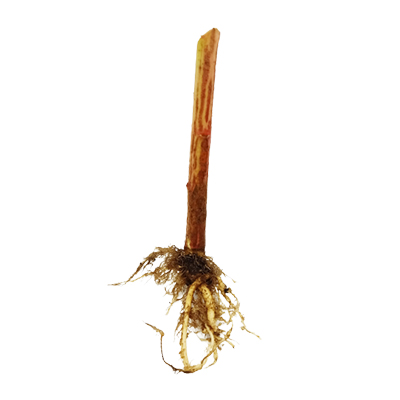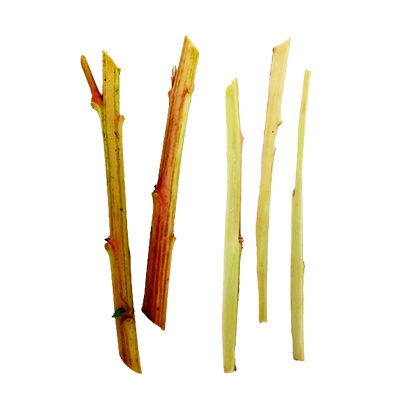Cocks comb
Celosia cristata (L.) Kuntze
Amaranthaceae
Location in our garden
Principal



Synonym
Amaranthus cristatus (L.) Noronha
Amaranthus huttonii H.J.Veitch
Amaranthus pyramidalis Noronha
Habitus
Herbaceous. Herb, annual, up to 1 m high
Part Used
Leaves
Seeds
Bark
Flowers
Roots
Stem
Growing Requirements
Full Sunshine
Habitat
Terrestrial
Overview
Vernacular Names
Indivara (India), Ji guan huo (Chinese), No-geitou (Japanese), Gaemaendeurami (Korean), Amarantecrête de coq (French), Brandschopf (German), Bunga jengger ayam (Indonesia).
Agroecology
It can grow in tropics, subtropic and warm temperate zones at elevations up to 1,600 m. Its annual daytime temperatures is within 25-30 °C and mean annual rainfall is 1,500-2,500 mm.
Morphology
Stem up to 20 m tall with grey smooth bark, white wood and terete, glabrous branchlets.
Leaves - 2-pinnate, up to 25 cm long; petiole 2-6 cm
long; leaflets 2-3 pairs per pinna, ovate-elliptical to oblong, 8-15 cm x 4-5 cm, opposite, chartaceous,mglabrous, dark violet-red when young.- Flowers – Inflorescence axillary, paniculate, up to 20 cm long; flowers sessile, 4-7 together in a pseudo-umbel on a short peduncle, 5-merous, bisexual; calyx cupshaped; corolla tubular, 4-5 mm long, 5-lobed, white; stamens numerous, at base united into a tube, free filament parts ca. 5 mm long.
- Fruits – a legume, compressed, falcate or twisted in a wide spiral, more or less deeply lobed along the ventral suture between the seeds, 2Q-25 cm x 3-4 cm, woody, greyish, glabrous, dehiscent along the ventral suture.
- Seeds – compressed orbicular, ca. 35 mm x 10 mm, testa yellow-green when young, turning dark brown. Germination is hypogeal and the first five leaves are scale-shaped.
Cultivation
- It usually grows as ornamental plant, propagated by seeds. Germination takes place within 5 to 7 days.
- Leaves can be harvested at 30-40 days and seeds at 80-90 days after sowing.
Chemical Constituents
Flowers: kaempferitrin, amaranthin, pinitol amarantin and isocelosianin.
Leaves: saponins, flavonoids and polyphenol.
Seeds: phenolic, celosialdehyde, saponins (cristatin, celosin A-D), flavonoids, steroids, triterpenoids.
Oil seed: palmitic acid, scualen, linoleic acid.
Traditional Medicinal Uses
Medicinal Uses
- The smashed flower is applied externally to treat sore, swollen body and abdominal pain.
The leaves are used in the treatment of infected sores, wounds and skin eruptions.
A liquid extract from the leaves and flowers is used as a body wash for convalescents.
The seed is used to treat diarrhoea, blood shot eyes, blurring of vision, cataracts and hypertension. The seeds are widely used in India for the treatment of diabetes mellitus.
A paste or juice from the root is taken to treat irregular menstruation, treatment of colic, gonorrhoea and eczema.
Traditional Uses
- This plant is used as ornamental, mass or group in beds, borders or cutting gardens.
- Flower can be used as fresh cut or dried flower.
- The leaves can be used as vegetable.
Part Used
Reference Sources
- Al-Snafi, Ali Esmail. (2015). THE CHEMICAL CONSTITUENTS AND PHARMACOLOGICAL IMPORTANCE OF CELOSIA CRISTATA – A REVIEW. The Botulinum J 5(4):254-261
- Fern, Ken. (2014). Useful Tropical Plants: Celosia argentea L. http://tropical.theferns.info/viewtropical.php?id=Celosia+argentea. 19-01-2021.
- Motaleb, M.A., Hossain, M.K., Alam, M.K., and et all. (2013). Commonly Used Medicinal Herbs and Shrub by Traditional Herbal Practitioners. IUCN (International Union for Conservation of Nature and Natural Recources). p44.
- PFAF. (No date). Celosia argentea cristata - (L.)Kuntze. https://pfaf.org/user/Plant.aspx?LatinName=Celosia+argentea+cristata. 19-01-2021.
Soetjipto H, Ayuningtyas NP, Aminu NR. 2020. Ekstraksi minyak biji jengger ayam (Celosia argentea var. Cristata) dan karakterisasi kandungannya. Jurnal Kimia dan Kemasan 42(2): 100-107. http://dx.doi.org/10.24817/jkk.v42i2.6138




